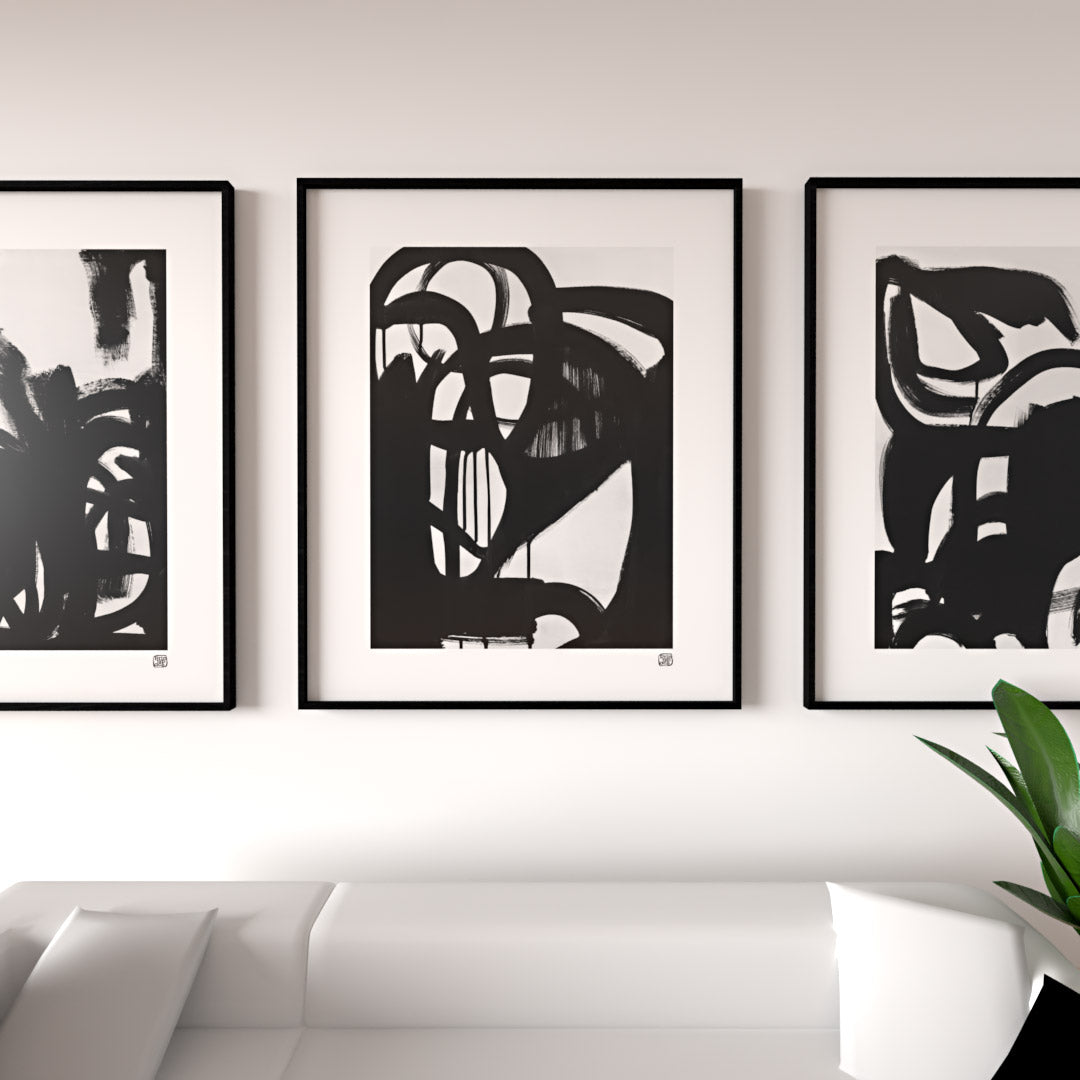When I was reading about another artist recently, they were answering a question about how they plan the creation of their artworks. I completely understood what they were talking about. They described the act of painting as a meditative experience. This is the same for me but only half the time.
The other half is when I am creating poster art. It's a little bit more planned in contrast to expressive painting. The objective is to create something very iconic but also add depth to the artwork without using perspective. So I try to use colour, tone, texture and pattern to help create simple and iconic poster artworks. I actually find the planning of art to be quite non artistic. Who wants to plan it - the fun is in doing it.
Ultimately, I like iconic shapes. I prefer the challenge of creating depth in a piece of artwork by using colour, tone and form.
Why do you create art?
Being encouraged as a kid played a big role. I was always told from a young age that I was an artist. People just called me that and I assumed that I was and carried on as one. It's not something that I decided one day that I would become an artist. I could tell you that it is about the passion and the love. Firstly, I find it difficult to communicate that without it sounding like bull. So I'd prefer to demonstrate this by creating.
Has being part of Printspace® helped you as an artist
Printspace® has given me a platform to show off my artwork. As a art painter, being part of Printspace® has been good but as we are completely self funded, it is often tricky to get exposure. Talent is not enough on it's own. Perhaps agents might see Printspace® as my agent but it is actually just me. And really, Printspace is simply a brand name that Mara and I created to sell our works under. The reality is that being represented would be good also. The good news for an agent or a gallery is that I already have a profile for my city prints and a growing profile for my canvas paintings. Follow this link to see my abstract art original paintings.
What makes a great piece of art?
It's the same thing that makes a good conversation. If you can relate to a painting from an emotive perspective, it tends to have a greater impact. The challenge I have with this is using sentimental cliches as a method of doing this. I feel that if you are trying to create a piece of art to be popular, you will always be a bit deflated. Popular is a medium pace moving target. It is not slow and it is not fast but it is moving all the time. With this in mind, I tend to focus on the colours, forms and ideas which interest me. So a good piece of art will connect with the viewer and the artist on an emotional level. It might not be the same emotional connection though.









